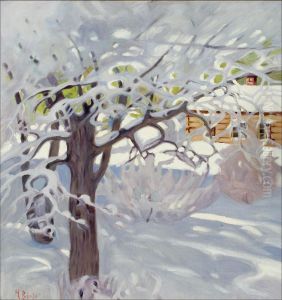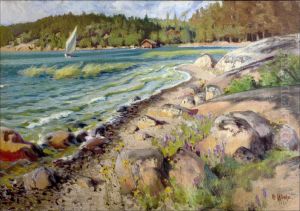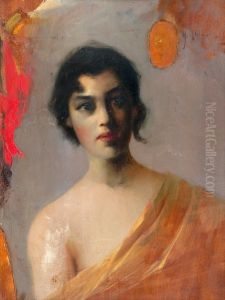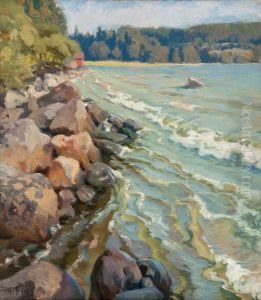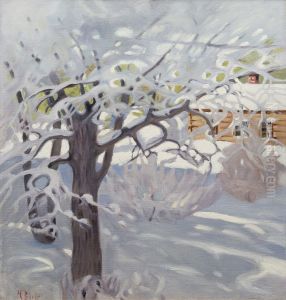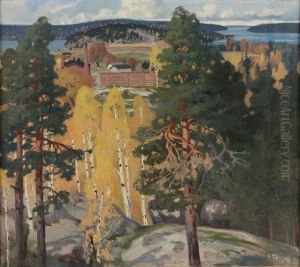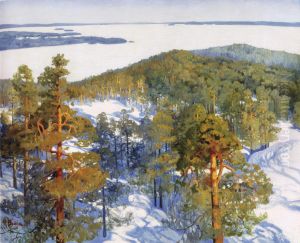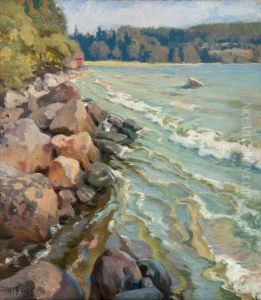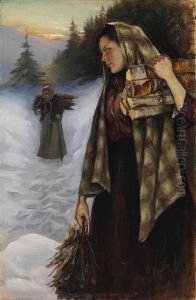Helmi Biese Paintings
Helmi Biese was a Finnish artist born on November 9, 1876, in Helsinki, Grand Duchy of Finland, then part of the Russian Empire. She was known for her impressionist works, which often featured landscapes and interiors with a soft, delicate touch. Her style was influenced by contemporary European art movements of the time, as well as by Finnish national romanticism.
Biese was one of the early female students to attend the Finnish Art Society's drawing school in the late 19th century. During her career, she was active in the art scene and participated in several exhibitions. She often worked alongside other Finnish artists and was part of the cultural life in Helsinki. Biese's contribution to Finnish art is significant, as she was among the pioneering women artists in the country, paving the way for future generations.
Throughout her life, Biese traveled extensively, which allowed her to study and exhibit abroad. Her travels took her to places like Paris and Italy, where she was exposed to new techniques and artistic trends. These experiences enriched her artistic expression and allowed her to bring fresh perspectives to the Finnish art scene.
Biese's works were characterized by a use of light and color that showed the influence of Impressionism, though she maintained a distinctive style of her own. Her paintings often depict the natural beauty of Finland's countryside and seascapes, as well as the charm of its rural homes and gardens. Biese showed a particular interest in capturing the changing seasons and the different qualities of light that they brought to the landscapes.
Despite her success and contributions, Helmi Biese's work was somewhat overshadowed by her male contemporaries and only more recently has received renewed attention. Her legacy is now appreciated for its role in the development of Finnish Impressionism and for her unique interpretation of the Finnish landscape and light. Helmi Biese passed away on April 18, 1933, in Helsinki. Today, her art can be found in various Finnish museums, and she is celebrated as an important figure in Finland's art history.
